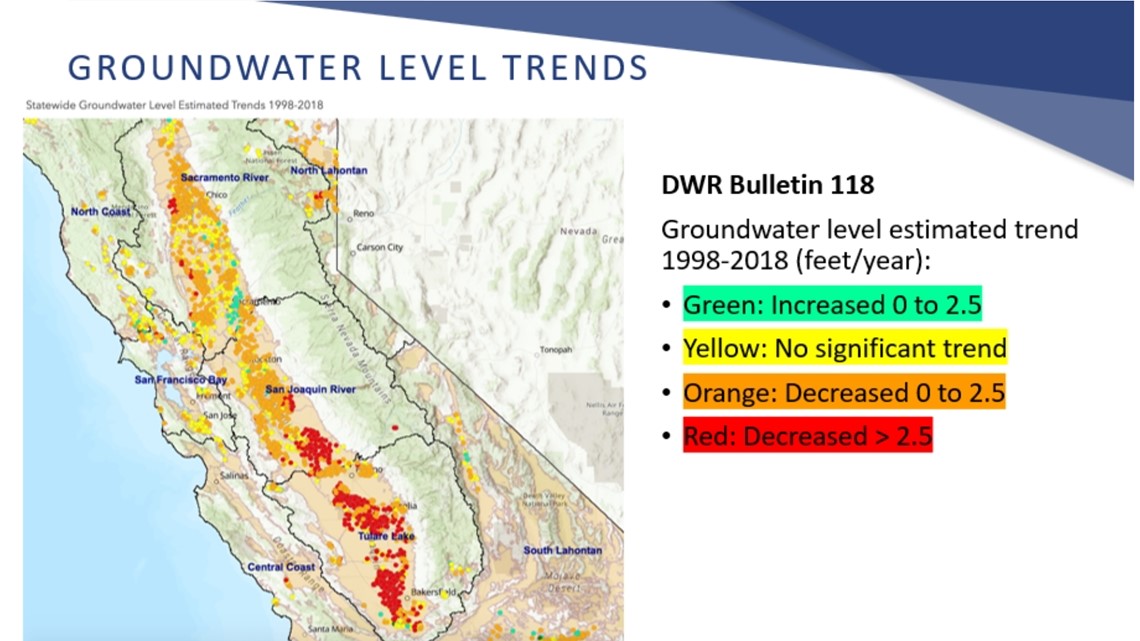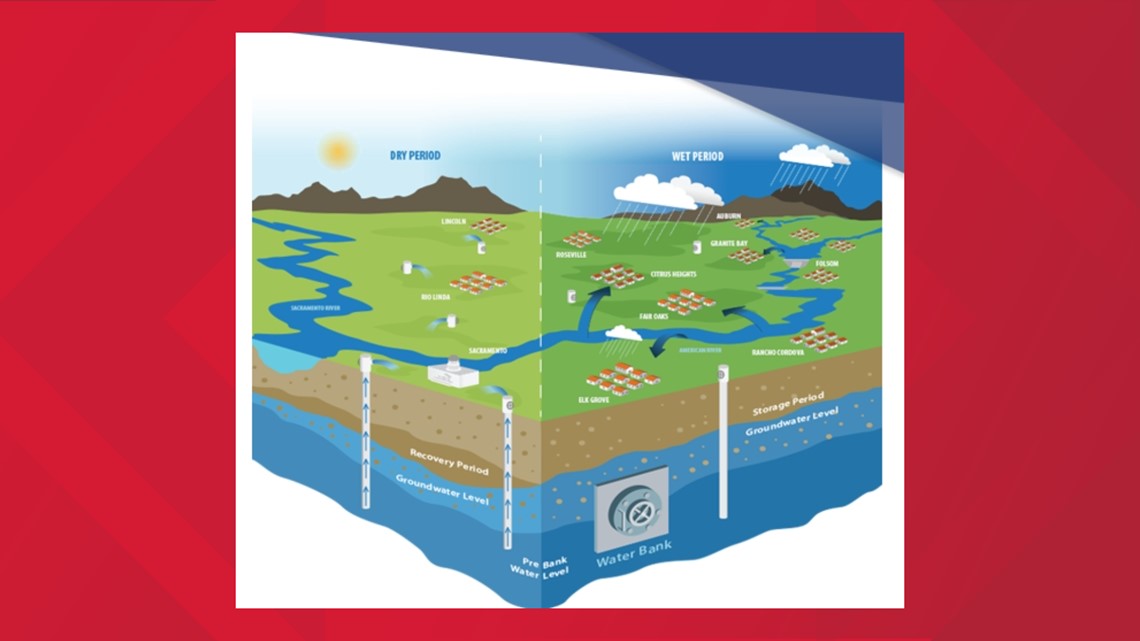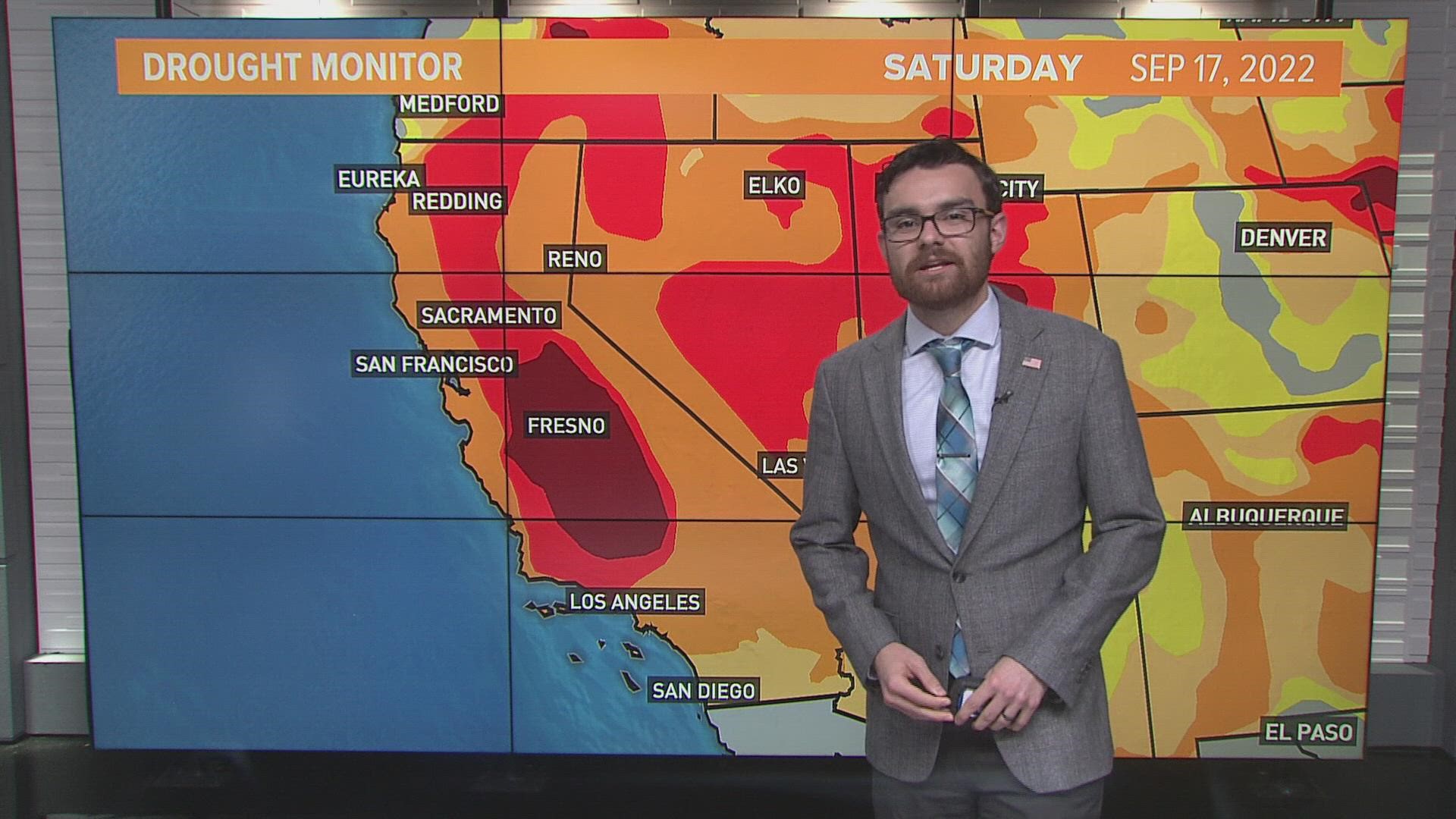SACRAMENTO, Calif. — A rare September storm brought wetting rains to the region, with the storm bringing much above normal rain totals in September for California.
The storm was not nearly enough to quell drought conditions in the state. California finds itself in a third year of drought and desperately in need of a soaking winter. A rare third year straight of La Nina could make this difficult.
The San Joaquin Valley is experiencing the worst of the drought, as the region is mired in exceptional drought, the highest designation of drought conditions. The unchanged weekly drought monitor shows that over 37 million Californians live in drought areas, nearly encompassing the entire population.


With summer now over and California's wet season approaching, it begs the question: What will it take to escape the drought?
According to Jim Peifer, Executive Director of the Regional Water Authority in Sacramento, it's a bit of a trick question. He offered to phrase the question in a different way.
"Perhaps the question is... what will it take to soften the severity of the current drought emergency," said Peifer.
RELATED: Sacramento Weather Forecast
The Western United States is enveloped in a 1,200 year "megadrought," according to a recent UCLA study. Paired with climate change and specifically altered precipitation patterns, Peifer recognized the challenge of supplying water to Californians amid drought.
"Lifting us out of the drought emergency would likely take record precipitation at this time, somewhere on the order of what it took us out of the last drought from 2012 to 2016, which at the time was the most severe on record," according to Peifer.
He added the recent storm "takes the edge off," but we still have a very long way to go.
Water security is the foremost concern for Peifer and the Regional Water Authority (RWA), which serves the interests of 21 water agencies across the greater Sacramento region.
"Our mission is to serve, represent and align the interests of regional water providers and stakeholders for the purpose of improving water supply reliability, availability, and quality," said Peifer.
Even amidst record drought and climate change, the RWA is certain the future isn't as bleak as most think. The agency is committed to a partnership between managing groundwater and surface water sources to ensure water security for Northern California.
The agency is looking into expanding storage both underground and on the surface. Peifer put an emphasis on the potential of sustainable groundwater management.
"In the state of California, there's 50 million acre feet of developed surface storage. The State Department of Water Resources suggests that there's on the order of a billion acre feet available for for groundwater banking and recharge," he said.
The Sacramento Valley isn't experiencing the same groundwater issues facing the San Joaquin Valley, where overdrawn aquifers are degrading water quality and causing the land to subside. Interestingly enough, portions of the Sacramento Valley actually increased groundwater levels, according to the Department of Water Resources.


"Our member agencies are managing groundwater in a way where they're not overusing it, they're allowing the groundwater basin to rest and actually recover and recharge," said Peifer.
Sustainably managing and utilizing the vast reservoir beneath our feet is key to ensuring a water secure future, according to Peifer. The DWR calls groundwater the "water bank," using groundwater in dry years, leaving precious surface water for other needs and banking and recharging groundwater in wet years by utilizing surface water and injecting water back into the ground through flooding farm fields and other methods.


According to the DWR, the snowpack is projected to experience a 48-65% loss from the historical April 1 average due to climate change. California's water infrastructure is reliant on the winter snowpack, but as the snowpack continues to decrease, sustainable water use will be even more vital.
Peifer applauded state and regional leaders for their work in sustainable groundwater, but realized there's much more work to do.
"It only works if we put the programs and the infrastructure in place to be able to utilize this groundwater storage," he said.
WATCH MORE ON ABC10: What is your electric utility doing to combat climate change?



















